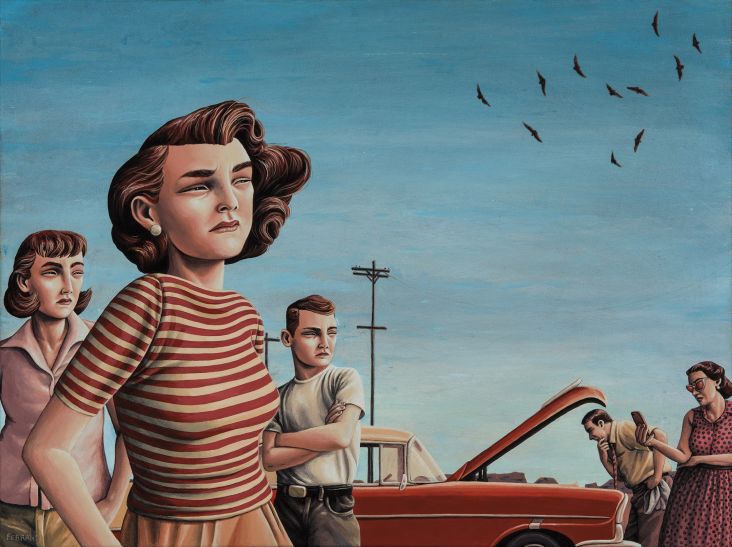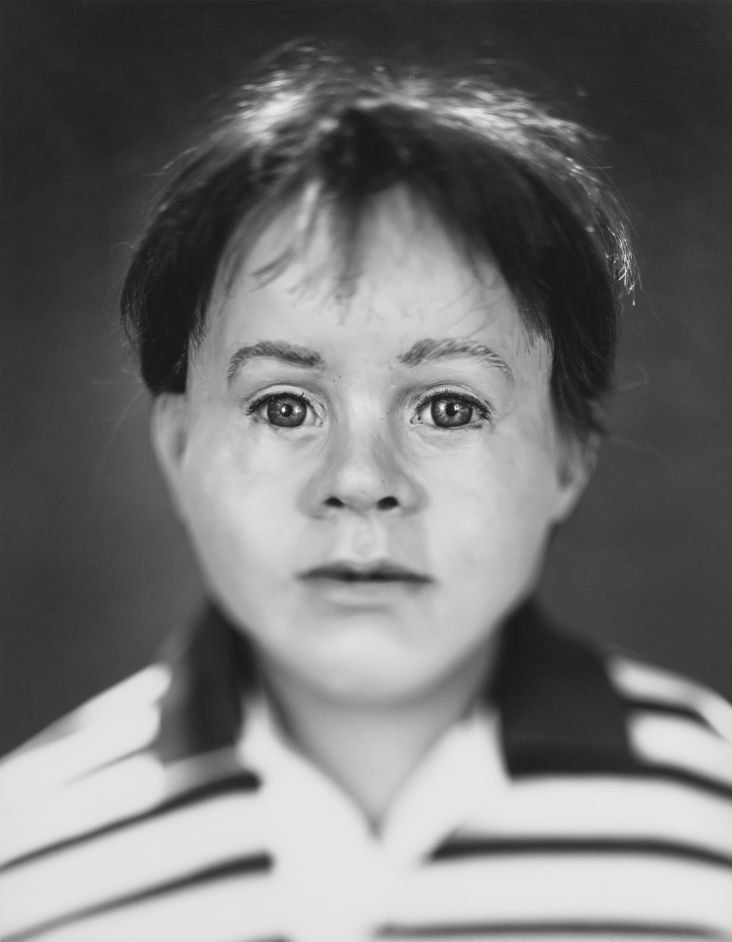Nathan Gibson's poignant and beautifully shot documentation of a dwindling Chinese community
Photographer Nathan Gibson has a beautifully nuanced documentarian with an eye for a brilliant story; as exemplified in a gorgeous recent series entitled Wavering Shadows.
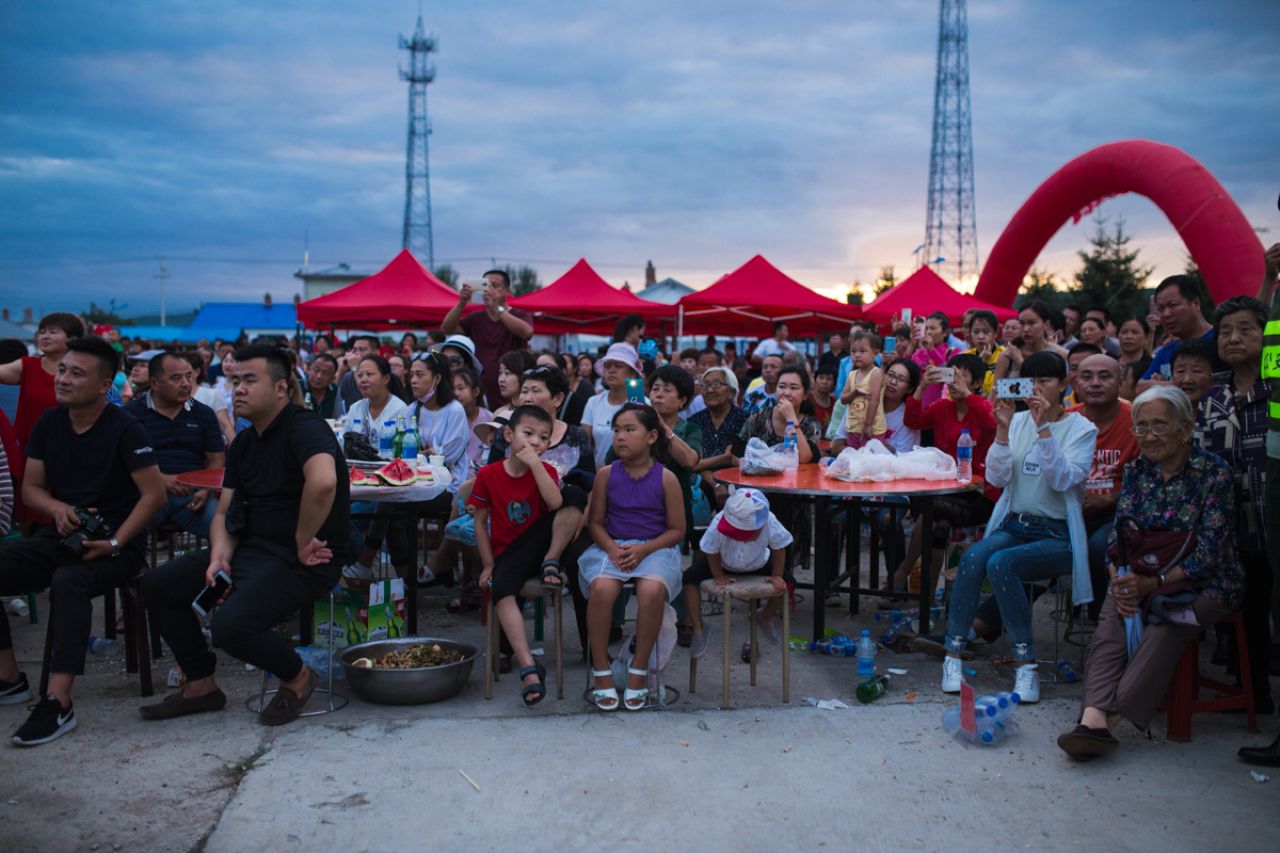
Xin'e Oroqen Settlement, August 2017 A crowd gathers to watch the annual Fire Festival in Xin'e, Heilongjiang Province.
Gibson, who is also a filmmaker, multimedia producer, and educator, is based in Beijing, China, and specialises in socially focused documentary and visual journalism projects. “My work is largely concerned with identity and belonging in a contemporary setting,” he says, “with more specific projects focusing on masculinity, ethnicity, language, modernisation, and community.”
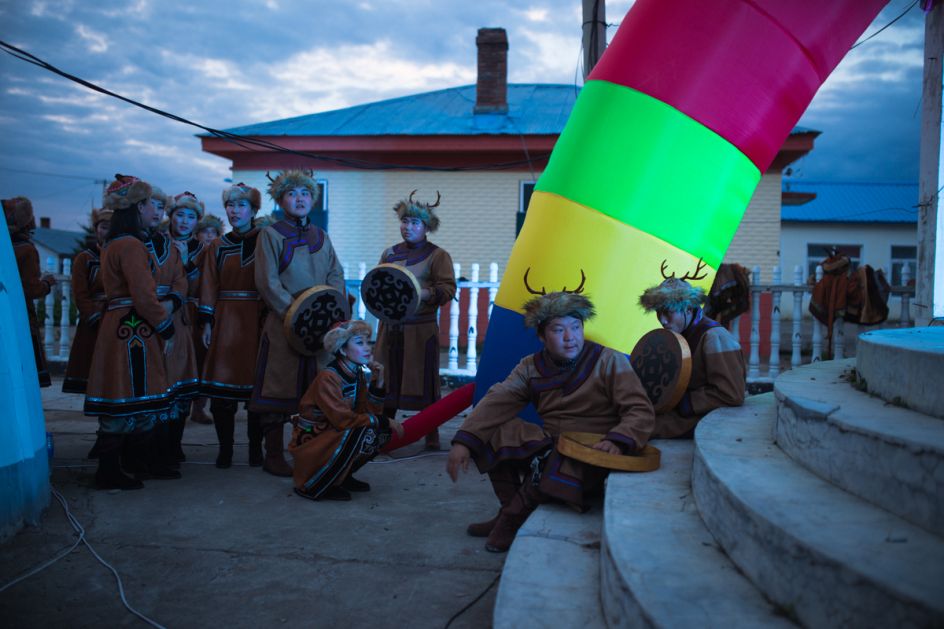
Xin'e Oroqen Settlement, August 2017 Performers plucked from the local youth wait to perform at the annual Fire Festival. Whilst Xin'e is designated an Oroqen settlement, the ethnic diversity of the region is reflected in the backgrounds of the performers, many of whom are Oroqen, Ewenki or Mongolian or have one parent from the Han majority population following increasing levels of intermarriage throughout the 20th and 21st centuries.
Wavering Shadows is an exploration of the Oroqen, one of the smallest of the 56 ethnic groups recognised by the modern Chinese state, with a population of around 8,000. Based mostly in the northern regions of Inner Mongolia and the Heilongjiang Province, the Oroqen were once “nomadic hunter-gatherers,” Gibson explains, whose ancestors had migrated down the Amur River (or Heilongjiang, or “Black Dragon River” in Chinese) from Siberia. Things radically shifted for the community in 1953 when the Communist government moved the community from its “diju,” mobile teepee-like structures, to state-constructed villages with mud-brick houses.
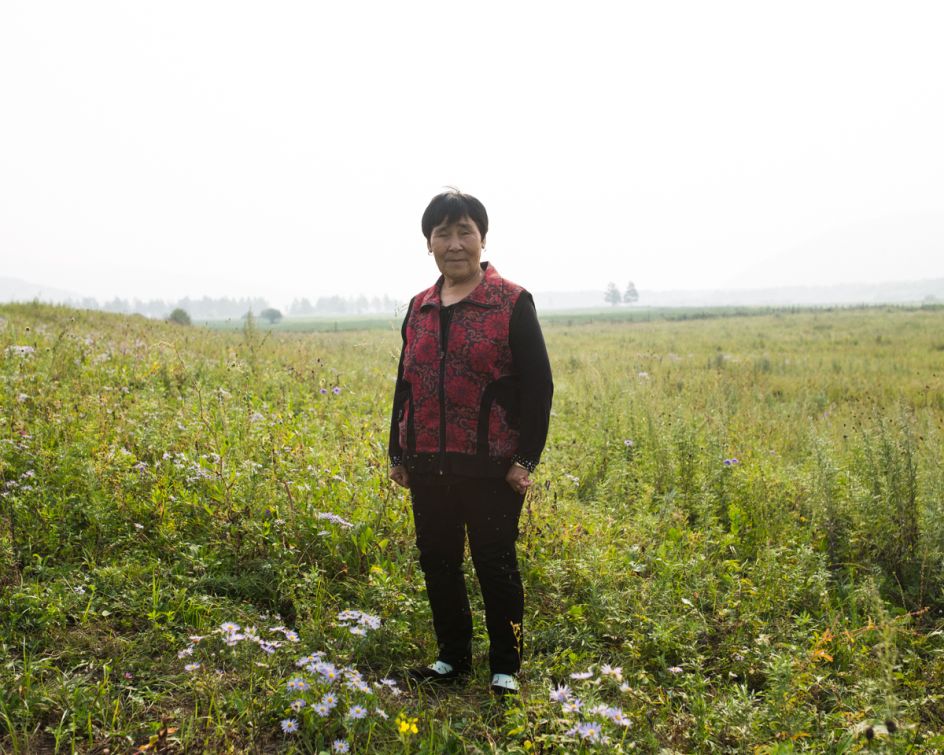
"Sometimes I speak Oroqen with my son and my daughter. They understand, but can't speak it. They forgot the language, they go to school for knowledge." Daqian, Tuohe, Inner Mongolia
That huge displacement meant rapid modernisation for the community, and today, barely any Oroqen under 40 are fluent in their indigenous language. “As it’s solely oral with no written form, its potential for continued existence is precarious,” says Gibson. “It is predicted that the Oroqen tongue will disappear within decades.” Life for today’s Oroqen – modern approaches agriculture, university education, and increased integration into mainstream Chinese society - soon became the norm rather than their historic clan life.
“Of course languages disappear all the time all over the world and those, like Oroqen, which have no written form are particularly vulnerable,” says Gibson. “The thought of that was just incredible to me. Language, after all, isn't just about the vocabulary and grammar that we use but about the thought processes behind it, and the idea that a whole way of thinking about and discussing the world might disappear was just astounding.”
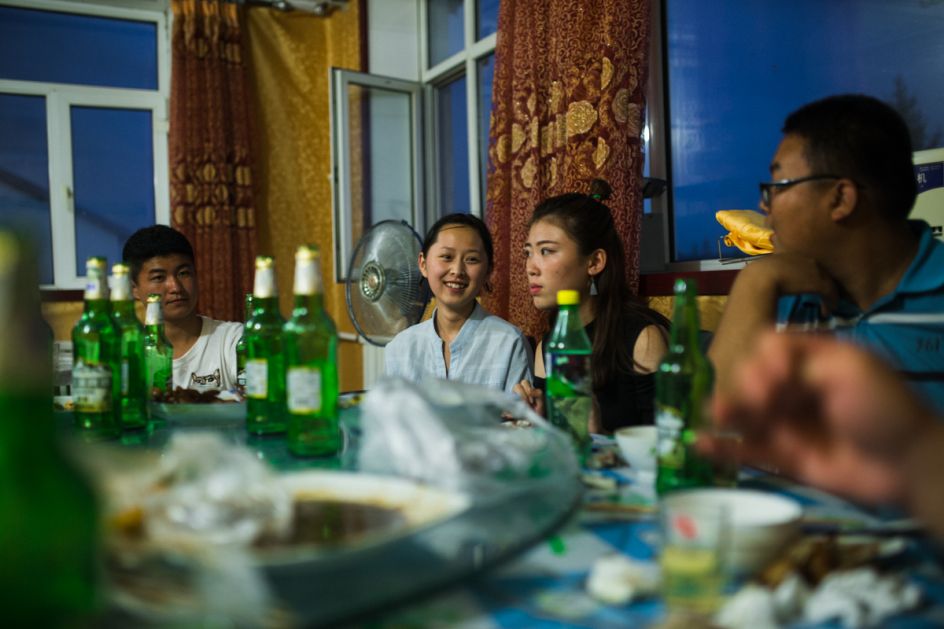
Xin'e Oroqen Settlement, August 2017 Oroqen youth and their friends from other ethnic groups – Mongolian, Han, Daur and Ewenki, eat together during a summer break. Life for these young people is dramatically different to that of the generations preceding them and many now attend universities across China or follow their parent into roles within local government.
Along with his friend Hilary Pan, Gibson began making links with community leaders via a foundation and got on a train to try and meet as many people as possible, trying to understand what the loss of language might mean and how people might be trying to resist it, or conversely, embrace change.
“I think that often when photographers go out to make images of indigenous communities they place them in a romanticised version of a past that didn't really exist, which is something we made it clear to ourselves we weren't going to do,” Gibson says. “A number of the older generation we met spoke little Chinese and could remember living in the forests, but the younger generation are modern people who go to university in big cities, study to be engineers or follow their parents into local government, and - despite being aware and often proud of their ethnic heritage - are largely integrated into mainstream Chinese society.
“The Oroqen's history is reflective of the vast changes that have happened across China over the last few decades, as the country has moved from a largely agrarian nation to an industrial powerhouse drawing in numerous ethnic groupings to present an image of a diverse and harmonious society. I think it best to leave it to the people we met to decide whether the changes affecting their community mean a loss of culture. I'm grateful for the time they gave us and hope the pictures provide a realistic depiction of what we found.”
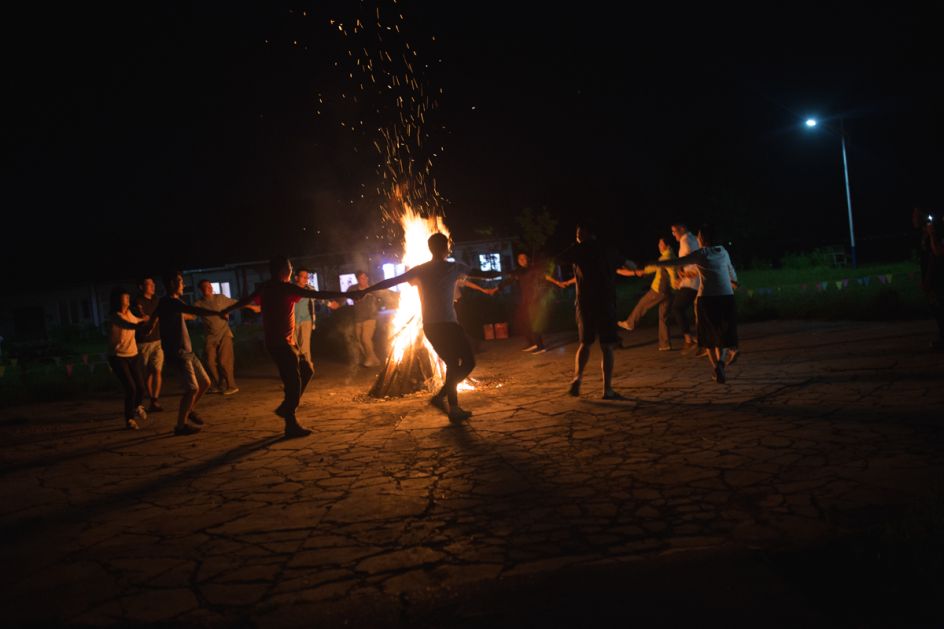
Heilongjiang Province, August 2017 Visiting university professors from Harbin take part in a fire ritual put on as a show by local Oroqen entrepreneurs. Interest in an ethnographically focused tourism industry and folk rituals are growing across contemporary China.
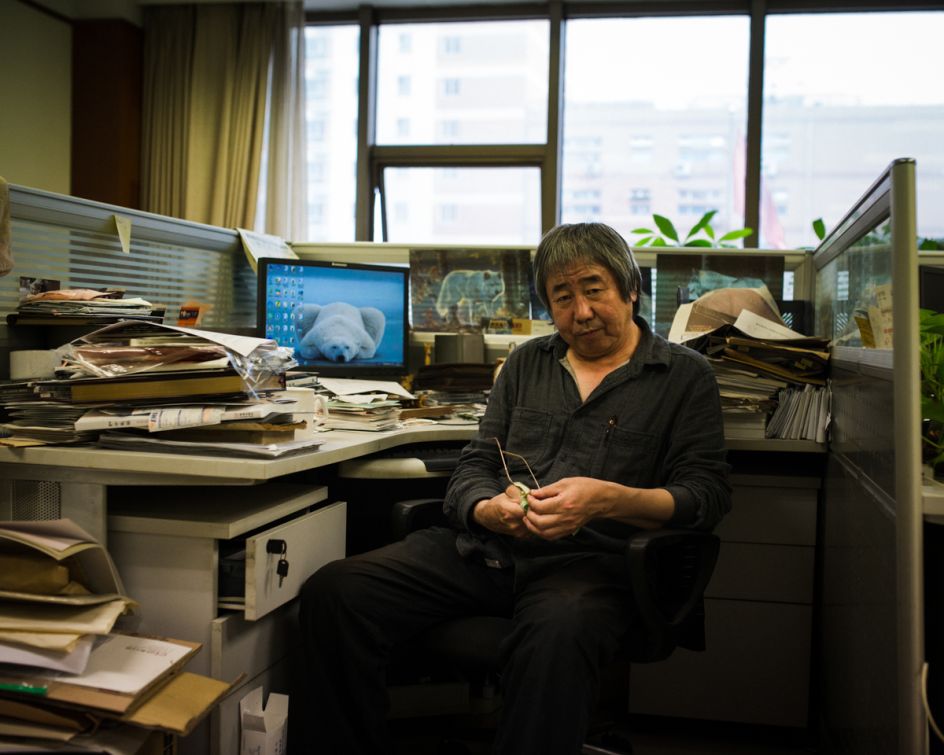
“The Chinese like to 'make' culture, a kind of culture that is created instead of inherited." Baiying, researcher, curator, artist, Beijing 2017
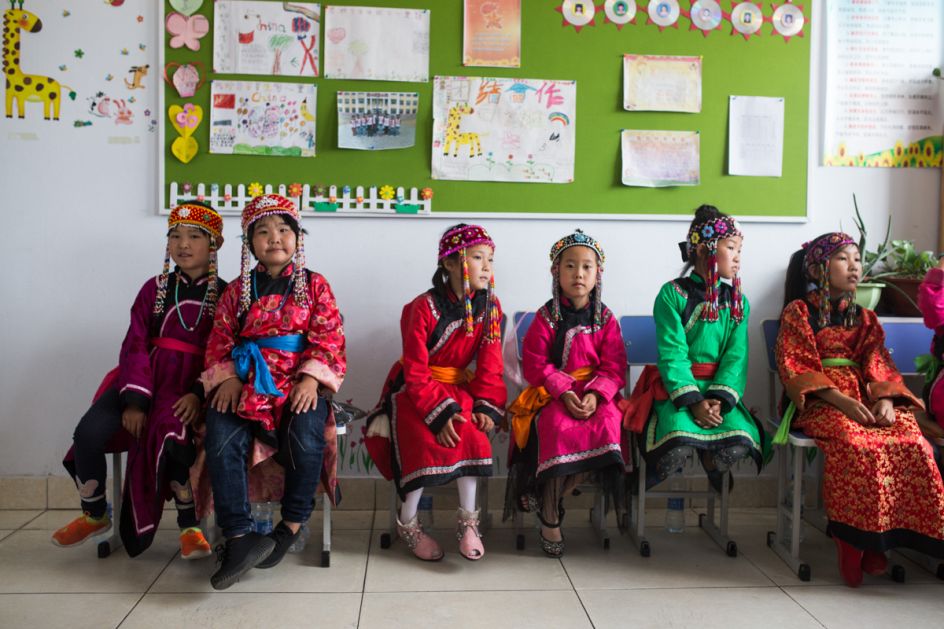
Oroqen School, Heilongjiang Province, July 2017 At Oroqen schools, the curriculum attempts to counter a dwindling of the ethnic minority's language, working lessons in Oroqen into their students' weekly schedule. Online platforms are being developed to engage younger learners, however the language remains under threat of extinction. Oroqen children are a minority at the school, with only two of the children pictured having Oroqen lineage.
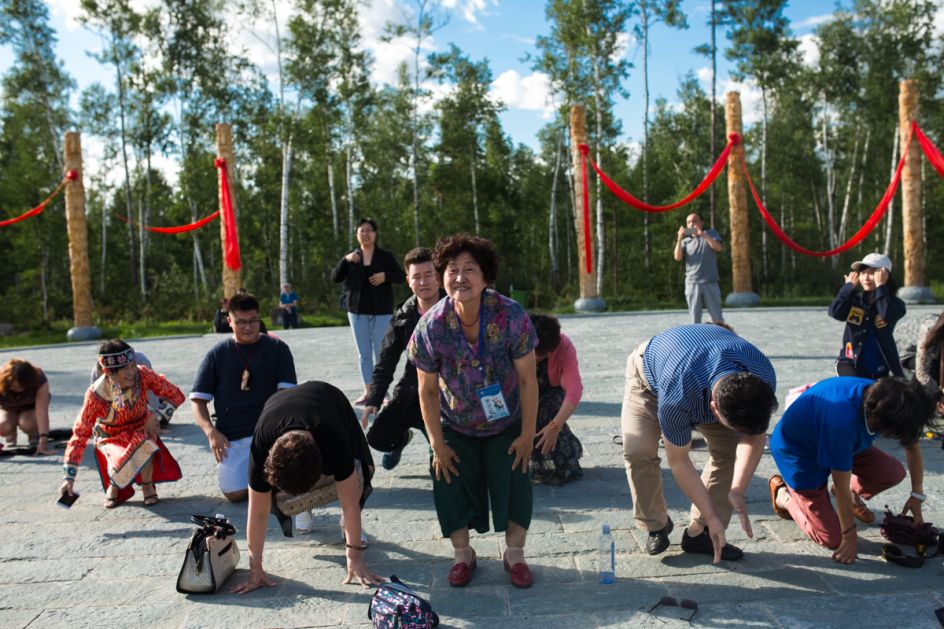
Lower Kingan Mountain Range, Heilongjiang Province, July 2017 Community leader Guan Jinfang leads visiting government representatives in a ritual praying for fortune from a newly constructed monument to shamanism.
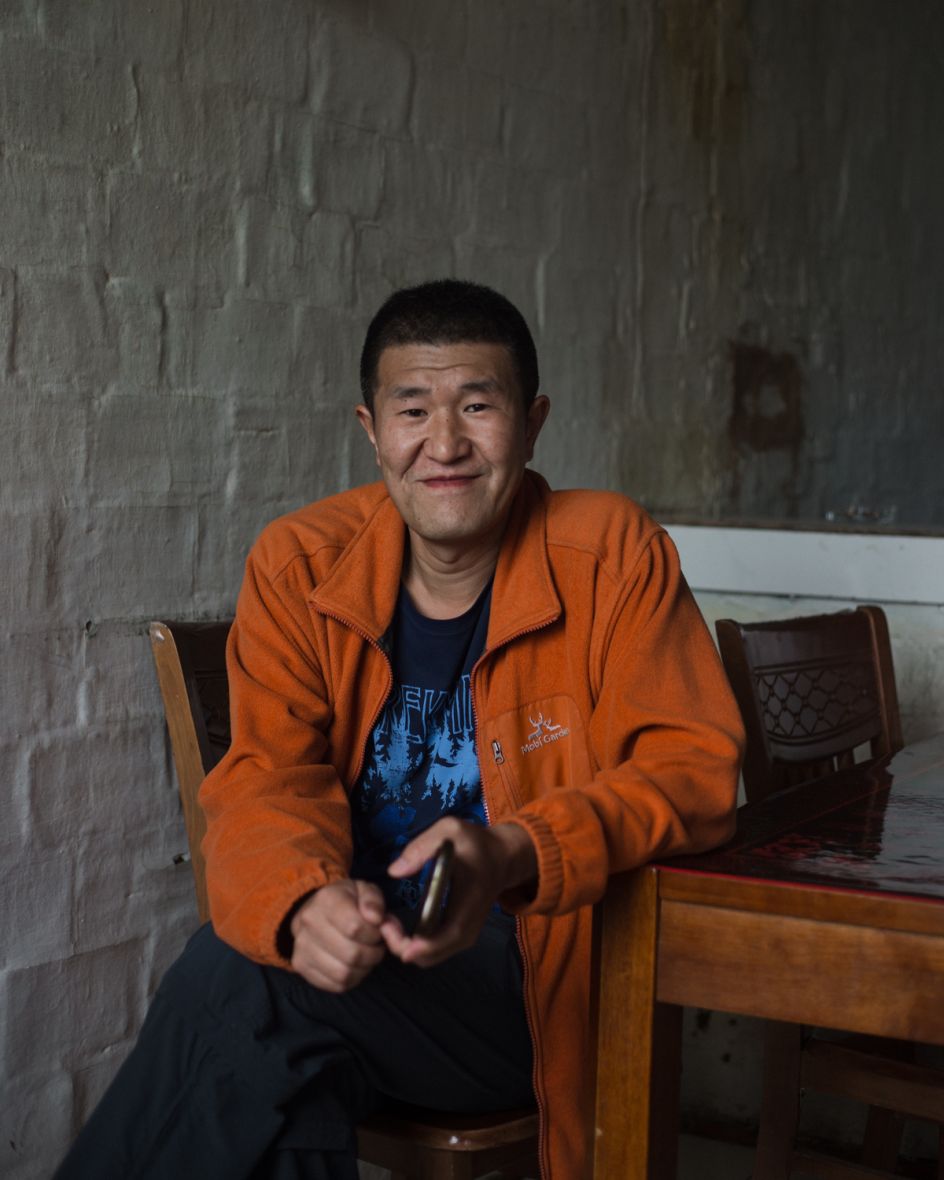
Guang Peng, Baiyinnar, July 2017 The Oroqen are one of oldest ethnic minorities in Northeast China and have cultural and linguistic links to numerous ethnic minority groups spread across Heilongjiang, Inner Mongolia and out to Siberia across the Russian border. As an anthropologist Guang Peng works to document the language and culture of his community in a rapidly changing world.
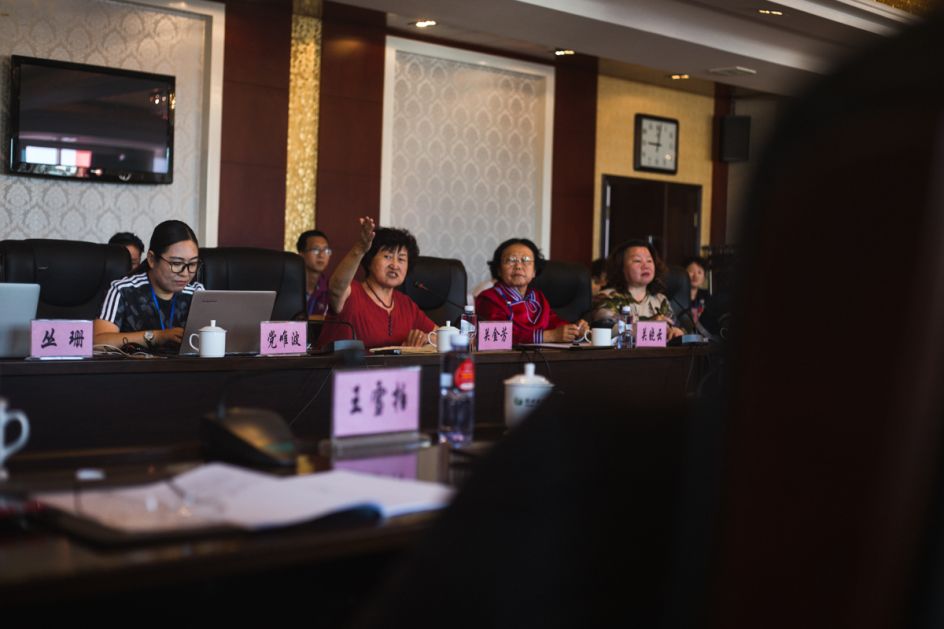
Tahe, Heilongjiang Province, July 2017 Guan Jinfang appeals to government representatives for funding and resources to carry out educational projects in the region. At this conference an online platform for Oroqen language learning was unveiled.
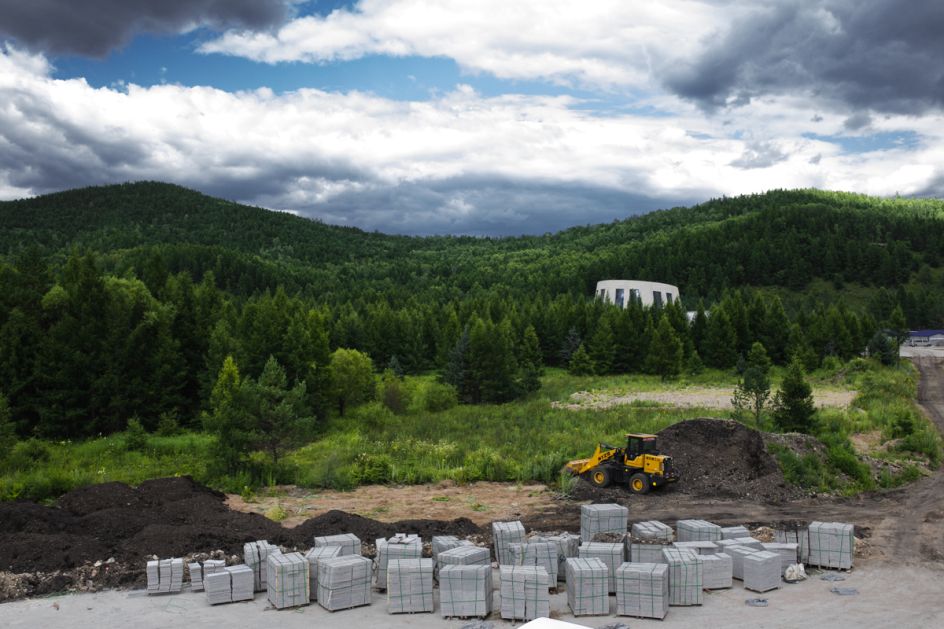
Greater Khingan Mountain Range, Inner Mongolia, July 2017 Widespread investment has poured into the Inner Mongolian tourist industry in recent years, and folk culture has become a target for a burgeoning eco-tourism industry.
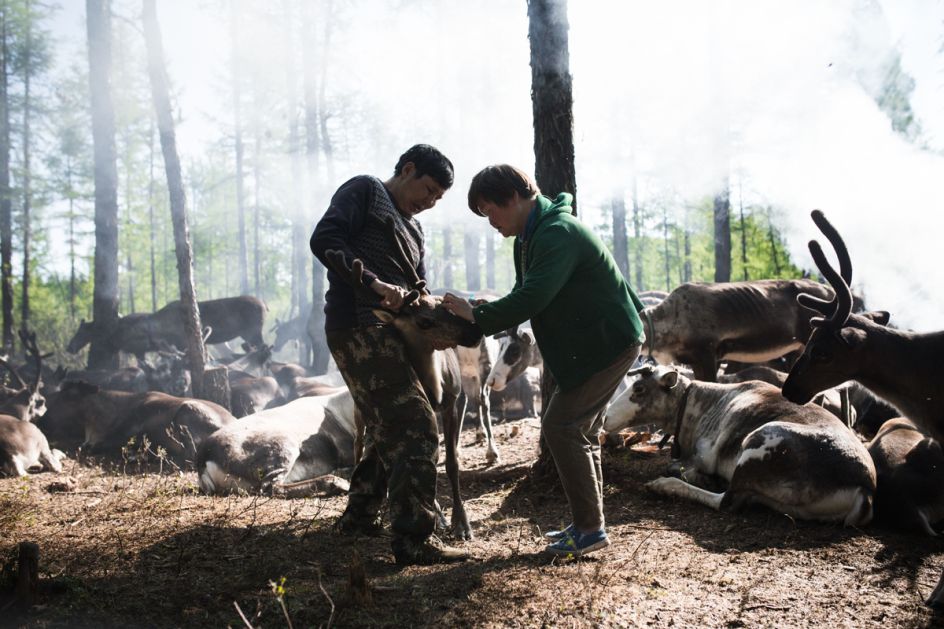
"When I first slept in a house I awoke one night and thought I had died. When we were in the djiu I would be able to look up at the stars but under the roof all I could see was darkness." Garulie, last of the Oroqen Shaman, 80, Baiyinnar 2017
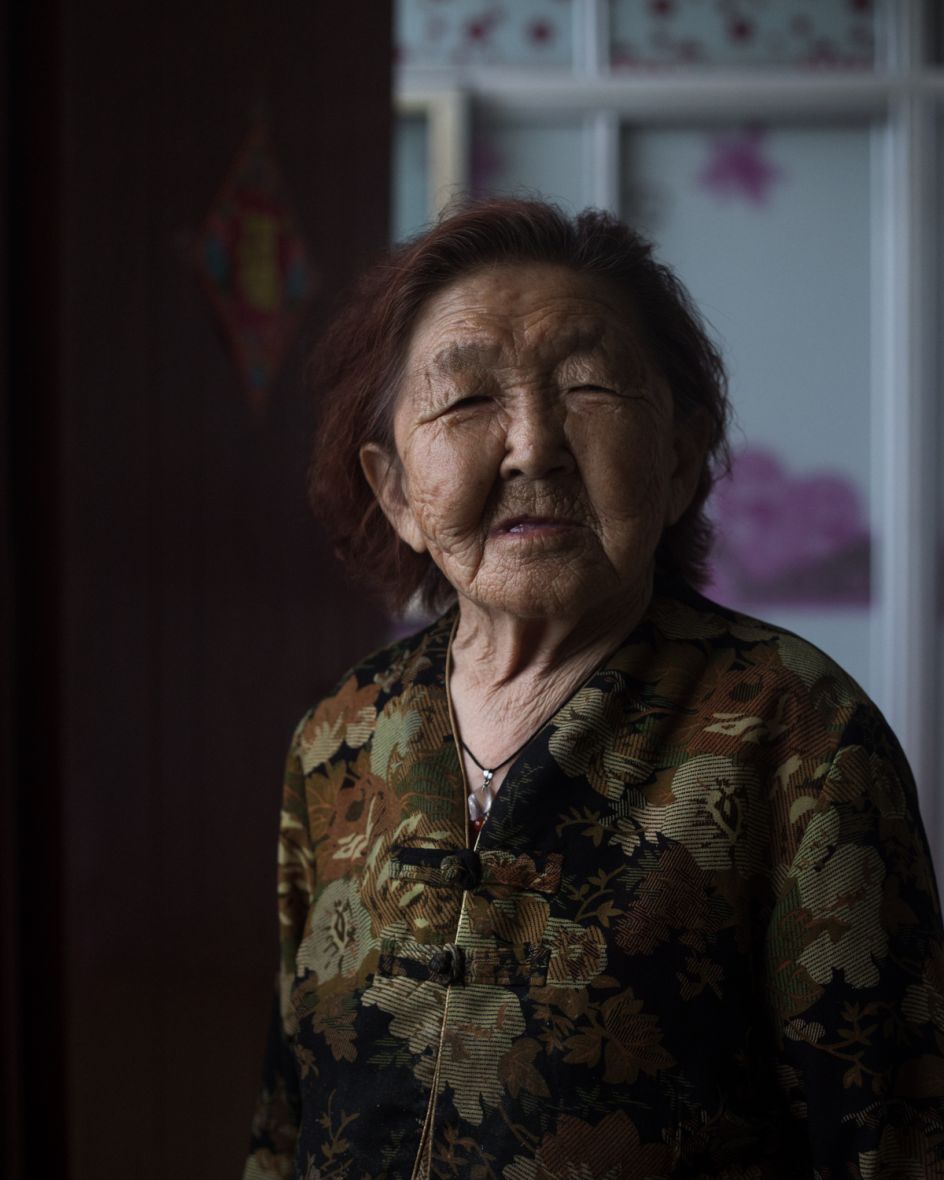
“Most of my friends go study in big cities.” Mo Renjie, 21, Xin'e Township
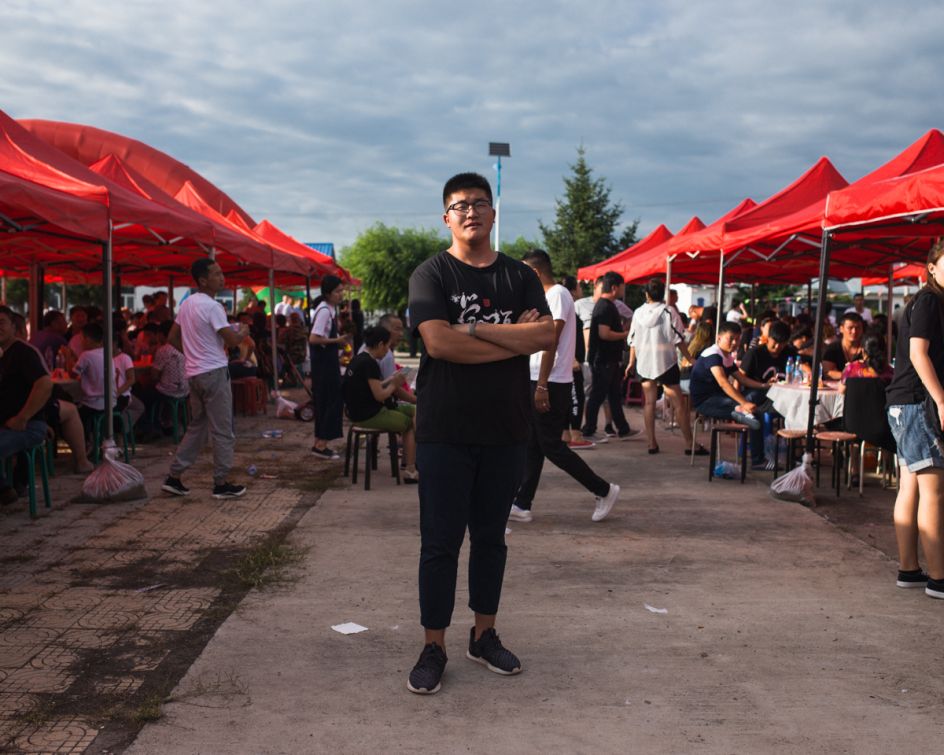
Heilongjiang River, August 2017 Young Oroqen depart after lunch on a restaurant on the river. The Heilongjiang (or Amur in Russian) acts as the border between China and Siberia and historically Oroqen and many other ethnic groups moved between the two regions.
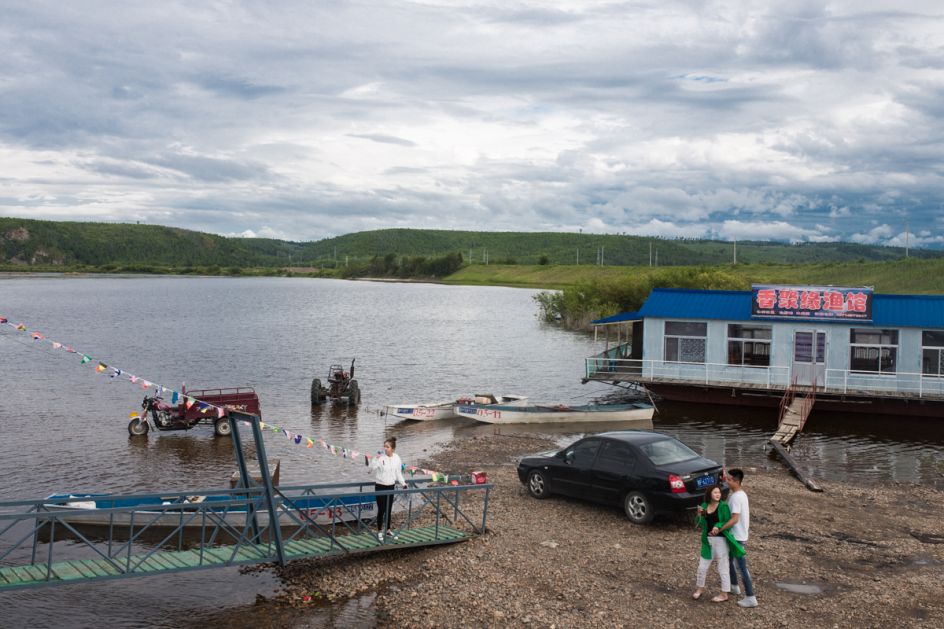
Tuohe Settlement, Inner Mongolia, August 2017
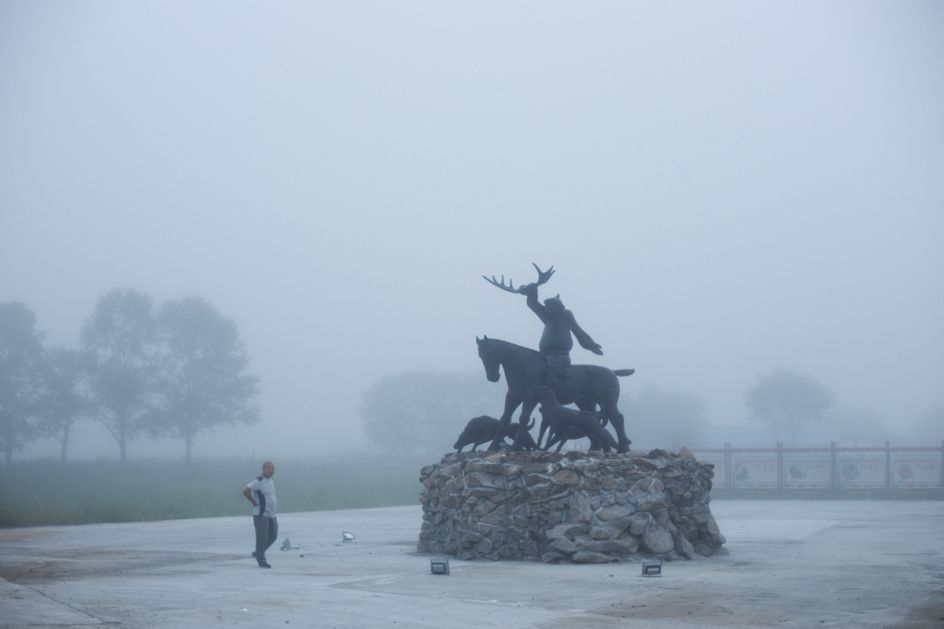
"The definition of a language disappearing is not that no-one speaks it anymore, but rather the loss of people who speak it from childhood. When the last native speaker dies, the language goes with them." Cong Shan, Linguist, Alihe, Inner Mongolia, 2017
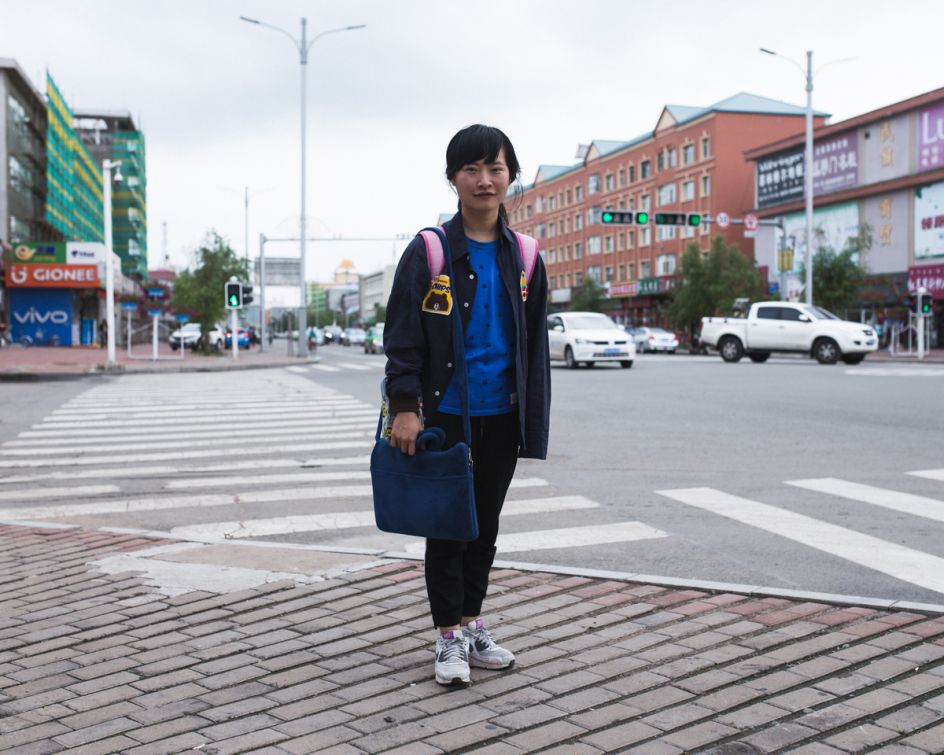
Alihe, Inner Mongolia, August 2017 Alihe Oroqen museum was rebuilt in recent years and contains an extensive and detailed physical record of Oroqen life. Attendance remains low however and the results of investment wait to be seen.

















